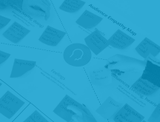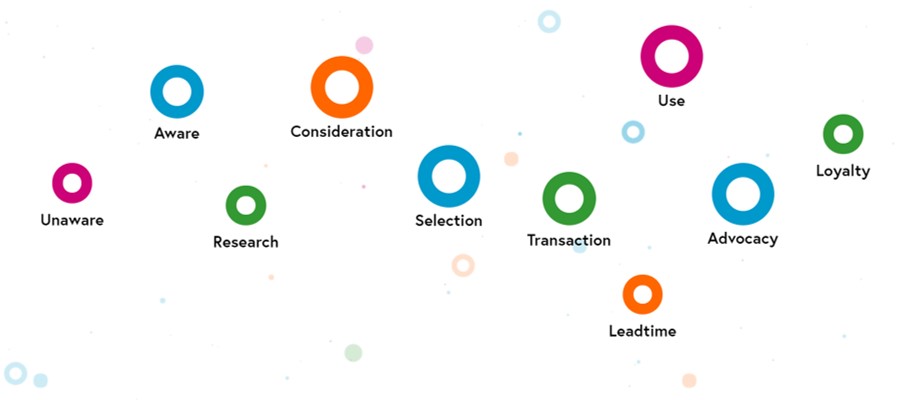
How to design the perfect Customer Experience using COM-B
Customer experience | 6 MIN READ
Wouldn’t it be great if you could design the exact experience your customers want? If you could understand their motivations and intent, their feelings and frustrations, to create an experience that is easy and feels natural, flowing freely on the path to purchase and onto long term brand loyalty?
We help our clients design the experiences their customers want at each stage of their journey by first understanding the user's experience. Doing it this way means the touchpoints reveal themselves due to the insight you glean from mapping the experiences. So we can explore how the customer is forced to adapt to the touchpoints available and how this affects their experience and understand if the appropriate touchpoints are even available.
David Somerville, Strategy Director

The 10 stages of Customer Experience
The Fresh Egg approach to Customer Experience Journey Mapping (CXJM) as a whole considers 10 distinct stages of experience that your customers will move through:
Which came first, the touchpoint or experience?
When it comes to improving Customer Experience (CX), the age-old conundrum of the chicken and the egg springs to mind, which came first: the touchpoint within the customer journey – that is, the app download, the Google search, the social share – or the experience that led the user there in the first place?
As a business, when mapping out your CX, which do you focus on first? You may have fallen into the trap that many brands do – to focus first on the touchpoints, giving customers lots of different ways to interact with you in the hope that they do, without really understanding the wider context of their journey.
However, focusing solely on touchpoints misdirects the marketer. Look at the growth of the Internet of Things (IoT): a few years ago, it was unknown that touchpoints such as Alexa would be so widely used today – but the increased use of voice search or at least desire to use voice search might’ve signalled this early on and given the brand the foresight to make that experience available to the user.
Building a behavioural map of experience
At Fresh Egg, our Customer Experience Journey Mapping (CXJM) approach looks beyond the physical touchpoints and has at its heart the need to build a behavioural map of experience. To do this, we use a four-step approach, with empathy mapping, audience interviews, experience mapping, and extracting the moments of truth.
We help our clients design the experiences their customers want at each stage of their journey by first understanding the user's experience. Doing it this way means the touchpoints reveal themselves due to the insight you glean from mapping the experiences. So we can explore how the customer is forced to adapt to the touchpoints available and how this affects their experience and understand if the appropriate touchpoints are even available.
Our aim with CXJM is to build a complete picture of what they want to do at each stage, how they approached the stage in their journey and identify what they find difficult and what they love the most along the way.
At each stage of the customer experience, we try to understand:
- What is the customer trying to do?
- What are their intentions and needs?
- What is their state of mind? (e.g. are they excited, eager or reluctant)
- What touchpoints are used and encountered? (e.g. other people, websites, TV or magazines)
- What are their frustrations? (e.g. lack of understanding, inability to find time or trouble with apps, websites or helplines)
Let us help you optimise the customer experience
Using COM-B behavioural model to enrich your CX mapping
To understand what type of intervention is appropriate – how a customer can be moved from one experiential state to the next – we apply the COM-B behavioural model to every stage.
COM-B is a simple framework for understanding behaviour. It works on the notion that behaviour is part of an interacting system involving three components – capability, opportunity and motivation.
Applying this model to each stage in our CXJM helps us understand whether the customer has the capability, opportunity and motivation to move onto the next stage in their journey. It makes us aware of what is necessary to move a customer from one experiential state to the next.
Let’s break it down:
- Capability - Do they have the knowledge, ability or skill required? Is there more information they need to know at this stage? What additional resources might be needed?
- Opportunity - Do they get a chance to find out, to move to the next stage. What options do they have available? Is there a ‘best time’ to reach them?
- Motivation - What motivates them? Can they be persuaded to move to the next step? How might they be influenced?
To help illustrate how this approach works, let’s look at just two of the 10 stages of experience:
- The Consideration stage: the customer is trying to find all the possible options and widening the possibilities.
- The Selection stage: the customer narrows the search based on chosen criteria, limiting or restricting options.
As a business, it’s easy to get fixated on pushing customers into the selection phase. Many businesses will send emails asking if customers are ‘ready to buy?’ based on them having viewed a product only once online. This type of email confuses two stages of experience: consideration and selection.
At the consideration stage, people are looking for help, guidance and suggestions. They’re exploring the various options and don’t yet know exactly what they want. This stage is poorly catered for by many websites, where the emphasis is on selection and reducing the options happens far too soon.
Think about the last time you shopped online. How often do you feel yourself being funnelled down a path, with each piece of information given to a website only helping to reduce the available options instead of growing them?
In the future, AI may help to improve the experience at this stage by allowing a more natural interaction at the consideration stage - uploading photos, discussing requirements and explaining our preferences to allow machine analysis of our attitudes and beliefs before suggestions are presented. We’ve explored this in great detail in our blog on what AI means for digital marketers.

Get our guide to empathy mapping
Download our FREE guide to empathy mapping - a simple but incredibly effective technique to kick-start your customer experience journey mapping.
What this means for websites, personalisation and remarketing
The customer’s overall experience and behaviour at the consideration stage are often neglected. This stage is a gold mine for data used in personalisation. It could provide a business with a reason to provide a better ‘consideration’ experience, as they will learn more about customer preferences when learning about experiences in the interviews.
By actively guiding exploration during the consideration stage (and not attempting to funnel the customer too soon), we can learn more about a customer and their preferences, presenting different offers, making alternative suggestions, and facilitating a greater exploration of all the options.
If using AI, we can ask customers to upload preferences and use analysis to inform suggestions. It is then possible to build a personal profile to use for targeted behavioural marketing.
If personalisation and AI sound too complicated, provide better functionality: dynamic menu options and filters to help keep exploration wide. See how OnTheBeach modifies the filters available during a search to keep as many options open as possible.
Dynamic 'filters' redirect the search, bringing alternative and similar search suggestions into the consideration process. For example, if you consider a specific destination, the menu might change to reflect all the possible departure airports, or if you change the departure airport, then all possible destinations can be shown to reflect the change.
This process helps the customer find a set of preferences and the best option for them. In other words, they are provided with both the capability and the opportunity to select a holiday, as well as the motivation.
Applying the COM-B model to your CX mapping process provides a simple framework to determine whether your customers have everything they need to move onto the next stage in their journey.
Would you like to know more about mapping out identifying customer behaviours or understand more about our approach to Customer Experience? Get in touch, and I will be more than happy to chat through any challenges you are facing with understanding the customer journey.





